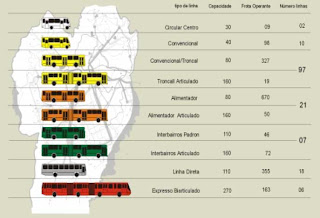

 Several trends indicated a tendency for uncontrolled growth and the well-known social and environmental negative impacts of rapid urbanization. The city has been acknowledged by the international media, experts and development institutions as a successful example of urban environmental management and social development. Within this process Jaime Lerner, three times mayor of
Several trends indicated a tendency for uncontrolled growth and the well-known social and environmental negative impacts of rapid urbanization. The city has been acknowledged by the international media, experts and development institutions as a successful example of urban environmental management and social development. Within this process Jaime Lerner, three times mayor of
The urban revolution that has made the city a national and internatinal reference in Urban Planning focused mainly in public transportation, environmental and social programs and urban design.
 Since his first term in office (1971-1975), there was a conscious decision to take control of the city’s urban growth process by using two basic means: land use legislation in combination with the right to determine public transport routes. Total priority was given to public transportation throughout the entire city and to pedestrians in the Central Area. City authorities began to implement the urban design structure that counterbalanced urban sprawl and emphasized linea growth along five pre-determined structural axes. Land use legislation was enacted to guide this growth, allowing for higher housing densities in streets served by public transport.
Since his first term in office (1971-1975), there was a conscious decision to take control of the city’s urban growth process by using two basic means: land use legislation in combination with the right to determine public transport routes. Total priority was given to public transportation throughout the entire city and to pedestrians in the Central Area. City authorities began to implement the urban design structure that counterbalanced urban sprawl and emphasized linea growth along five pre-determined structural axes. Land use legislation was enacted to guide this growth, allowing for higher housing densities in streets served by public transport.
The plan was transparently shared with the population, contributing to avoid land speculation. It is also important to note that this design helped provide mobility to all strata of society, from higher income households to lower income settlements located in the outskirts. A “social fare” was also encouraged, for the people who live closer to the downtown area pay the same flat fare as the lower-income users who board the buses in the periphery.
No comments:
Post a Comment